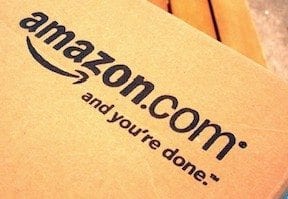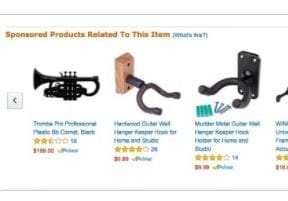Consumers around the world are acquainted with Amazon. I spent $3,607.08 on Amazon in 2016 alone. With 54 million U.S. consumers (64 million worldwide) in its Prime program, Amazon rivals any modern company in both scope and revenue. If you’re a typical U.S. shopper, you bought something from Amazon in the last few weeks, if not today.
Amazon is convenient: Consumers can shop for clothing, luxury goods, musical instruments, and even food. The company also takes good care of its clientele. From a money-losing strategy for the benefit of shoppers to guaranteed Prime perks, Amazon’s policies keep its customers happy.
So happy, in fact, that the migration to Amazon is generating massive creative devastation — 2,386 brick-and-mortar store closings have been announced by 12 of the largest U.S. retailers in the last three years alone.
Retailing vs. Technology
Amazon started by selling books online through a virtual storefront and consolidated logistics. After much success, it expanded its product offerings, built out its supply chain infrastructure, and then transformed into the massive technology company we recognize now. It also serves as a search engine for retail products, a marketplace for third-party sellers, a personalization-intelligence source, and a price scientist.
Amazon’s most profitable division could be Amazon Web Services, or AWS, its cloud-computing platform that brings in $10 billion in annual revenue.
Amazon has coupled sophisticated, algorithm-driven ecommerce with aggressive delivery automation, supply intelligence, and loyalty programs — for extraordinary results.
Amazon’s seemingly endless aisle of inventory combined with its prowess in search engine marketing — organic and paid — has produced enormous traffic. Personalization tactics have expanded on-site conversion. Terrific customer service and the 2-day shipping guarantee of Prime membership help Amazon retain its shoppers.
Some retailers now sell excess inventory through Amazon’s marketplace. Other retailers sell drop-shipped products through Amazon — retailers create the listings on Amazon and then notify the supplier or manufacturer to ship the products when they are sold.
Worrisome to Brands
As Amazon has become the demand hub for products online, not every brand has been eager to offer its supply, and for good reason..
Apple won’t sell hardware or software through Amazon, in large part due to Amazon’s most recent additions of competing technologies like the Kindle, Fire TV, and Prime-exclusive phones. (This works in the reverse, too: Amazon bans competing products.)
Moreover, it was recently discovered that over 90 percent of Apple-certified products on Amazon were actually knockoffs, further hurting Apple’s brand. Apple forbid any direct sale of its hardware on Amazon as a result.
In fact, brands are getting more blame for the toxic counterfeiting fallout on Amazon’s marketplace. Brands end up spending more time identifying counterfeit suppliers who, for example, boast claims of genuine Apple chargers. These counterfeits can not only be dangerous for the brand, but also create safety risks for the consumer.
Birkenstock recently pulled its entire inventory from Amazon, alleging that the “open market, creates an environment where [it] experiences unacceptable business practices which [it] believes jeopardizes [its] brand.” Amazon’s lack of quality control of third-party sellers was, in effect, too much for Birkenstock to handle.
Amazon’s business-to-business support center is almost entirely automated. So, as a brand, if one of your resellers or competitors accuses your company of fraudulent or illegal activity, Amazon will remove your products for two weeks while your lawyer subpoenas the accuser to get it to retract its report. You’ll find it nearly impossible to speak with a human at Amazon to state your case. How would two weeks without revenue impact your company?
What’s especially difficult for brands, however, is Amazon’s price manipulation via its algorithm — an extremely precise and sophisticated method of making sure Amazon’s product is sold at the right time, at the right price, to the right consumer. On many high demand items, Amazon reportedly sets the price below its brand competitors (who have agreements to sell the products at fixed price ranges) — sometimes 20 percent lower. Thus, even when brands and retailers feel like they’re winning the battle against Amazon, the moment of purchase proves otherwise.
In short, brands are unable to preserve their reputation in Amazon’s marketplace. While some brands have exited the Amazon ecosystem early, many others remain. For them, an even larger threat is coming.
Amazon’s Private Labels
The brands that remain on Amazon could end up competing directly with Amazon’s private labels. After years of providing Amazon with shipping, sourcing, and all types of consumer data via retailer relationships, brands fear that Amazon could replicate their products.
Their fears are not unsubstantiated. Amazon has identified high margin, replicable product lines where it can insert a private label brand. This includes AmazonBasics, MyHabit, Happy Belly, Mama Bear, Presto!, Lark & Ro, and North Eleven, to name a few. Many brands worry that the trend will continue.
So why don’t all brands remove their products from Amazon? Because Amazon has enormous revenue potential. A brand that walks away from Amazon is handing immediate revenue to its nearest competitor in the Amazon marketplace. Brands, paradoxically, find themselves unwilling to relinquish immediate revenue, even if it means being out of business in 10 years.
The Road Ahead
Some brands are pulling away from Amazon. But that, again, is leaving room for their competitors, resellers, or for an Amazon private label. Some retailers are striving to differentiate through better service, better product curation, or with their own endless aisle of products. But Amazon is investing heavily into technology and talent to win seemingly every sector of retail.
Offsetting the Amazon advantage could require the combination of strong central technology for the “everyone but Amazon” market, and a mindset of partnership across retailers and brands. Consumers, however, may not be ready to adopt that approach.
The road ahead will likely see retailers dump obsolete assets, merge to survive, or collapse. For example, Sports Authority, the sports equipment retailer, could eliminate its own retail operations and then direct its customers to Amazon to buy Sports Authority’s Champion products. But eventually Champion could be cannibalized by Amazon’s private label.
To be bed with Amazon is to be bed with a competitor — a very specialized and powerful competitor that has more data, logistics, and consumer demand than any other company in history.
The only chance for brands could be the hard-but-courageous thing: cut their products off Amazon and then give consumers a reason to buy.




